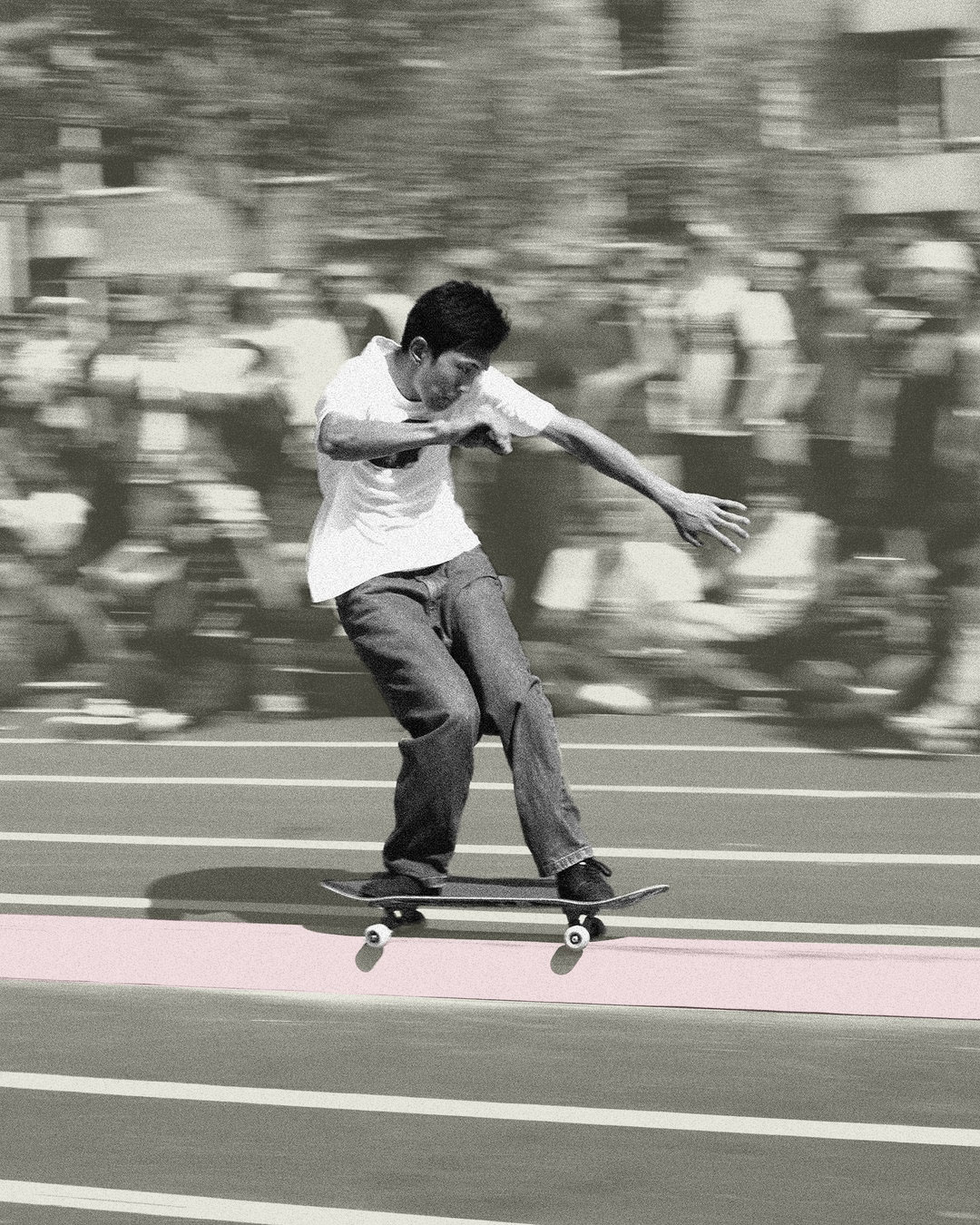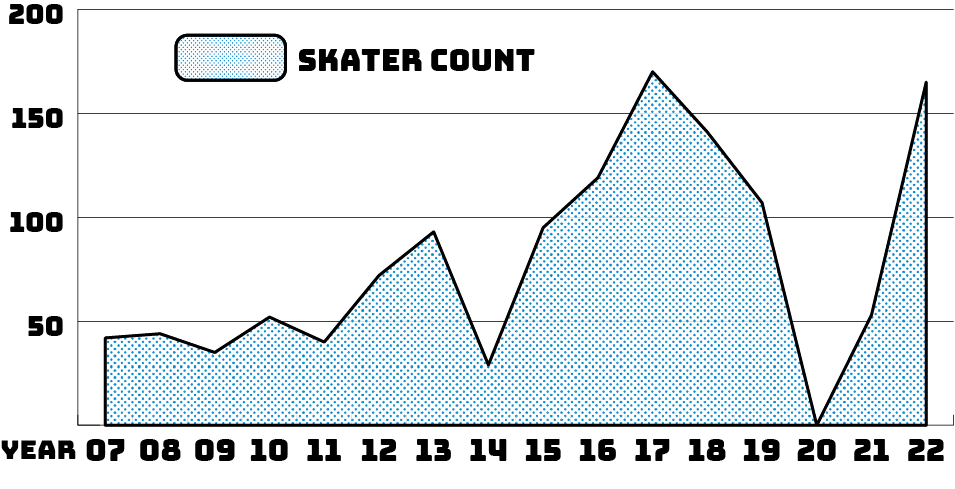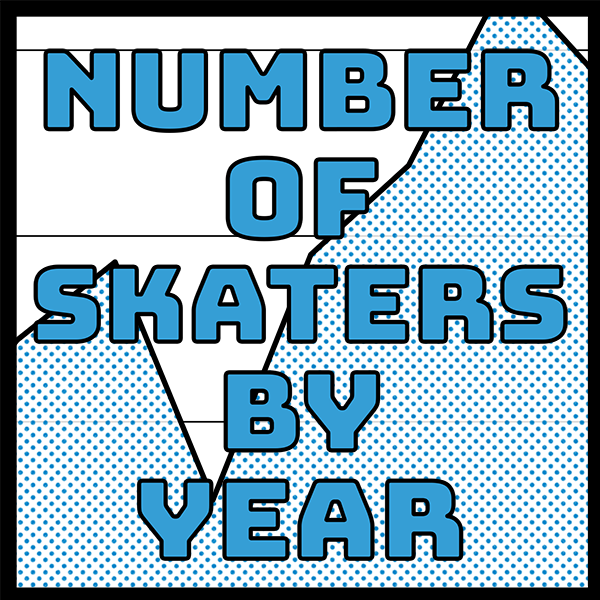Back in June, the 4Ply crew packed up our abacuses and Apple Newtons, no-call-no-showed to our day jobs and headed across the planet to Denmark for the week of peace, love, and skateboarding that is the Copenhagen Open. Our plan was to gather data, make lifelong industry connections, interview some of our favorite pros, take usable photos, and hustle some bar graphs… Strictly business.

It took all of 15 minutes upon arrival before liquors drunkened us and in true CPH spirit we said “fuck it” and pivoted from the quest for content to the pursuit of good times. We were fully prepared to write the whole thing off, but then, at the 11th hour, Copenhagen co-founder William Frederiksen saved our asses with an in-depth interview (coming soon to 4Ply) and the good folks at The Boardr handed us a giant block of continuous feed paper with the entire history of the event in spreadsheet form. It’s on!
So now that we’re finally over our “Copenhangover” (you can use that, William), let’s dig into this dataset for a couple of bonus CPH observations.
Our data covers 15 Copenhagen Opens from the past 16 years (there was no CPH in 2020 for some reason) going all the way back to the skinny pants days of 2007. The data only covers skaters who actually participated in the official skateboarding contests. Lookie-loos, sit-boys, and folks filming tricks outside the boundaries of the sanctioned events are not included here.
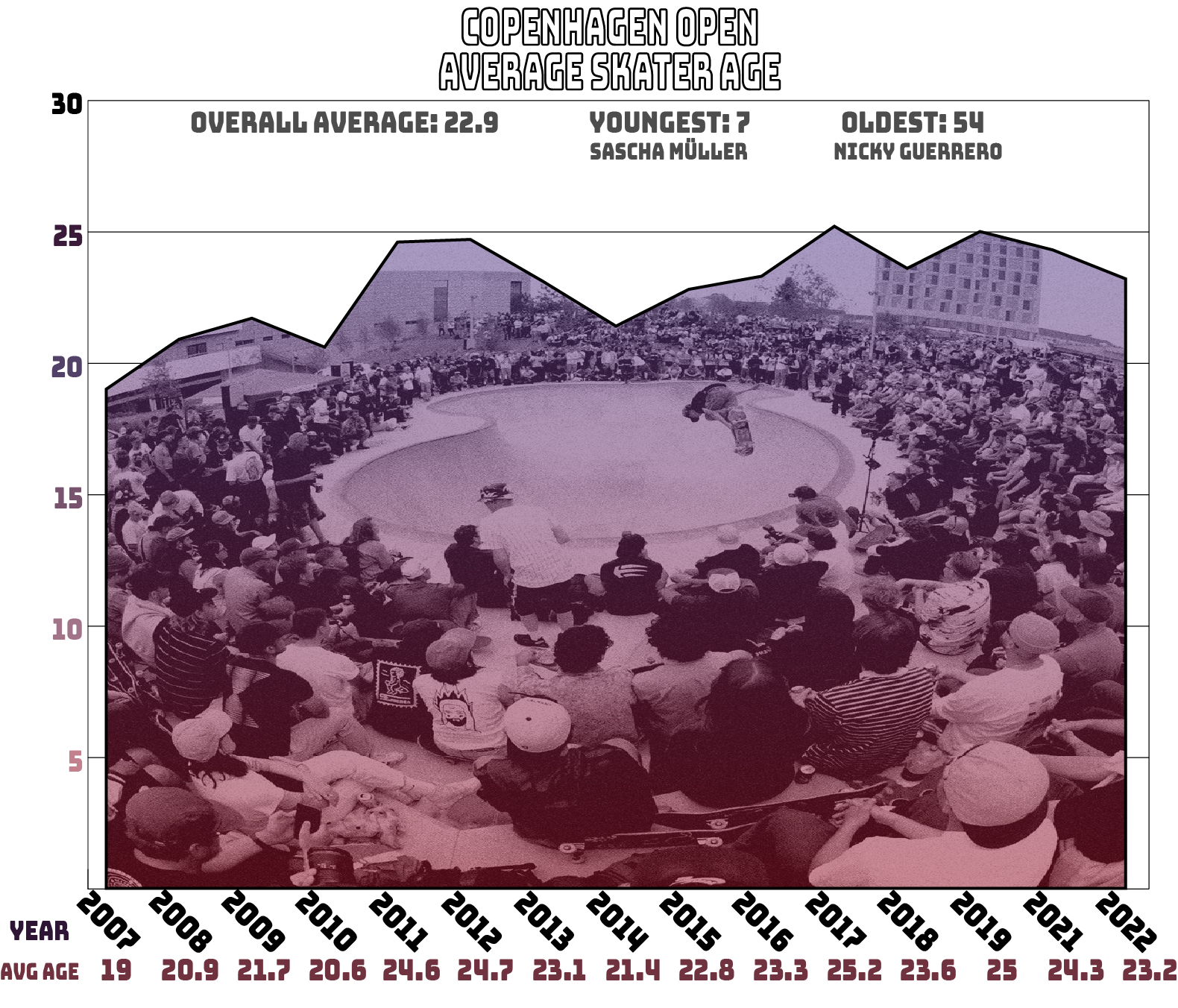
This area chart handsomely plots the average age of a CPH participant over time. Skaters whose age wasn’t known or recorded were removed from the dataset. Things might also skew slightly younger due to the presence of officially sanctioned Euro-centric Am events, such as the 2022 Shinner App Qualifier, where the average age was under 13!
As you can see, the ages seem to climb slightly over time, but never really hit much above 25 years old. This holds true to the fact that a skateboarder’s early twenties are their prime years for contest skating, sponsored travel, and partying. But it is also worth noting that many skaters return to Copenhagen summer after summer and, not surprisingly, age a year in the interim. For example, Luan Oliveira was a 19 year old teenager when he entered his first CPH in 2010 (below the average age for that year), but was 31 years old when he skated recently in 2022, nearly 8 years older than average.
― George Bernard Shaw
Speaking of age differentials, the youngest participant ever was Sascha Müller from Germany, who was 7 back in 2007 (but is 23 now). Not to be mistaken with this German Sascha Müller. The oldest skater was Copenhagen local and Powell legend Nicky Guerrero, who was 54 years young when he placed top 20 at Rune’s Bowl in 2022.
Let’s take a look at some more CPH-by-Year data.

And you know we can’t resist translating this table into a series of area charts (and let’s include the big nothing that was 2020 as well).
CPH-by-Year
These charts, which give a yearly representation of the number of events that comprised CPH (in yellow), the number of unique origin countries the skaters came to CPH from (red), and the total number of unique skaters who participated every year (blue).
Because these charts all share the same horizontal x-axis timeline, we can eliminate the different scales represented on the vertical y-axis and overlap them to get a clearer picture of the correlations.
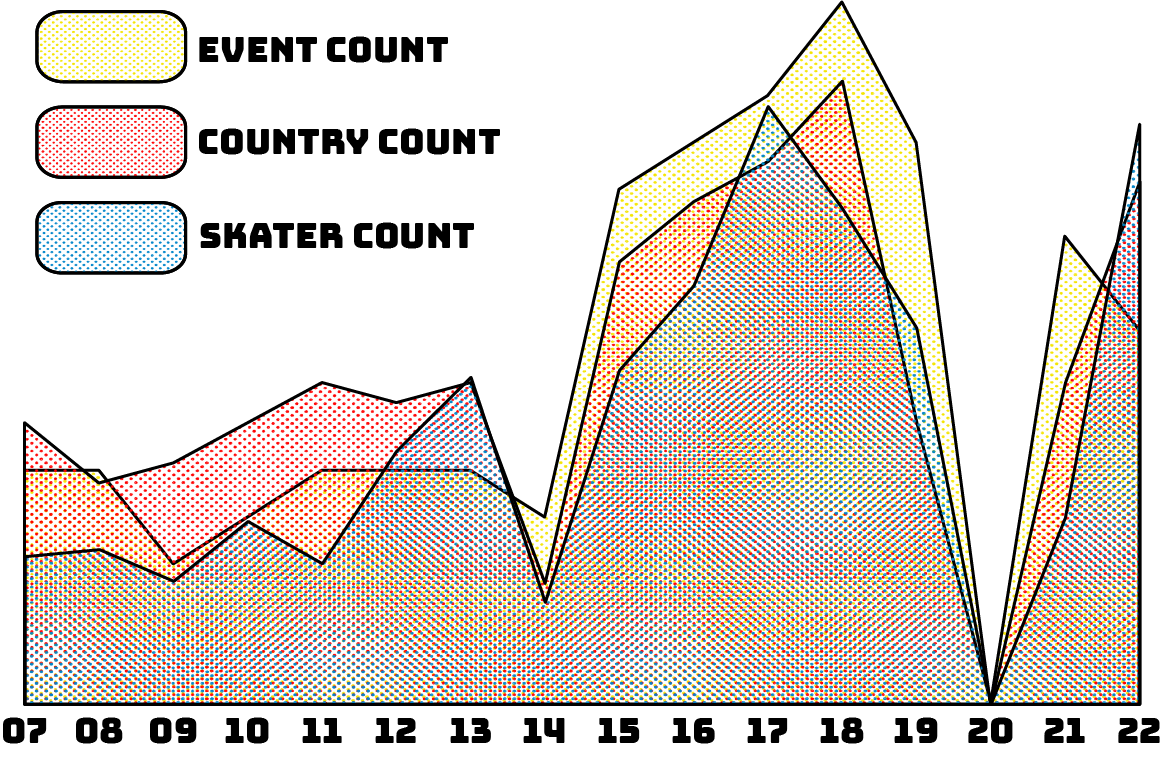
What we are looking for here is not the specific counts of these categories, but the overall shape of the areas corresponding with one another. Did the counts of all these things rise and fall together?
This overlapping area chart gives a decent picture of growth and setbacks of CPH over time, and, yes, for the most part it was demonstrated in all 3 categories being tracked. You can see the rapid growth that started in 2015 and peaked in 2017 and 2018, with attendance, nationalities, and number of events being nearly double what they were during the first 5 years of the contest. And see the clear comeback that just happened in 2022, with skater and country counts back up to high levels even with less individual events than previous.
But what caused that 2014 dip?
CPH Champions
For our final chart, let’s rank some skaters.
While the spirit of Copenhagen Open is all about friendship, fun, and getting faded, it is still, in fact, a series of competitive skateboarding events and records are kept of how skaters placed in those events. And we here at 4Ply love a good quantitative ranking system.
Similar to our annual Quartersnacks Top10 analysis, we devised a “points” system that corresponds to event placement so we can rank skaters and compile a “score” that can rollover from event to event and even year to year. Let’s take a look under the hood.

These four lines of Python code create our points system from our dataset (assigned the variable df). The first line of code creates a points column in the dataset by subtracting the skater’s placement (row.place) from the integer “12”. So someone who placed first would get assigned a points value of 11 (12 - 1), and someone who placed second gets 10 points (12 - 2), and so on.
Now, since many of the events had placements beyond the top ten and into the 50s, this would result in zero or negative points being assigned to skaters landing beyond 11th place. To remedy this, our second line of code takes places that are greater or equal to 11th place and assigns them a points value of 1. So anybody who placed out of the top ten got 1 point, regardless if they were in 11th place or 45th place.
We also determined that not all events at CPH were deserving of equal points, since some events were qualifiers or semi-finals. Lines 3 and 4 of our code resolve this situation elegantly by simply devaluing the points for those lesser events. In line 3, the program uses a conditional loc function that determines if the event in the contest column contains the word “Qualifier”. When this condition is met, the points of that row are divided by 2.
Similarly, line 4 reduces the points in contests containing the words “Semi-” by a third (and then rounds it to 2 decimals with the round function).
Now every placement a skater has in any Copenhagen Open event has an attached points value. So, in addition to a skater winning a certain event (and you can view 9 years of CPH results on the Boardr’s website here) we can now declare an overall CPH winner for each year.

Even more epic, we can combine a skater’s points for the entire 16 year run of the Copenhagen Open to determine who holds the all-time CPH crown.
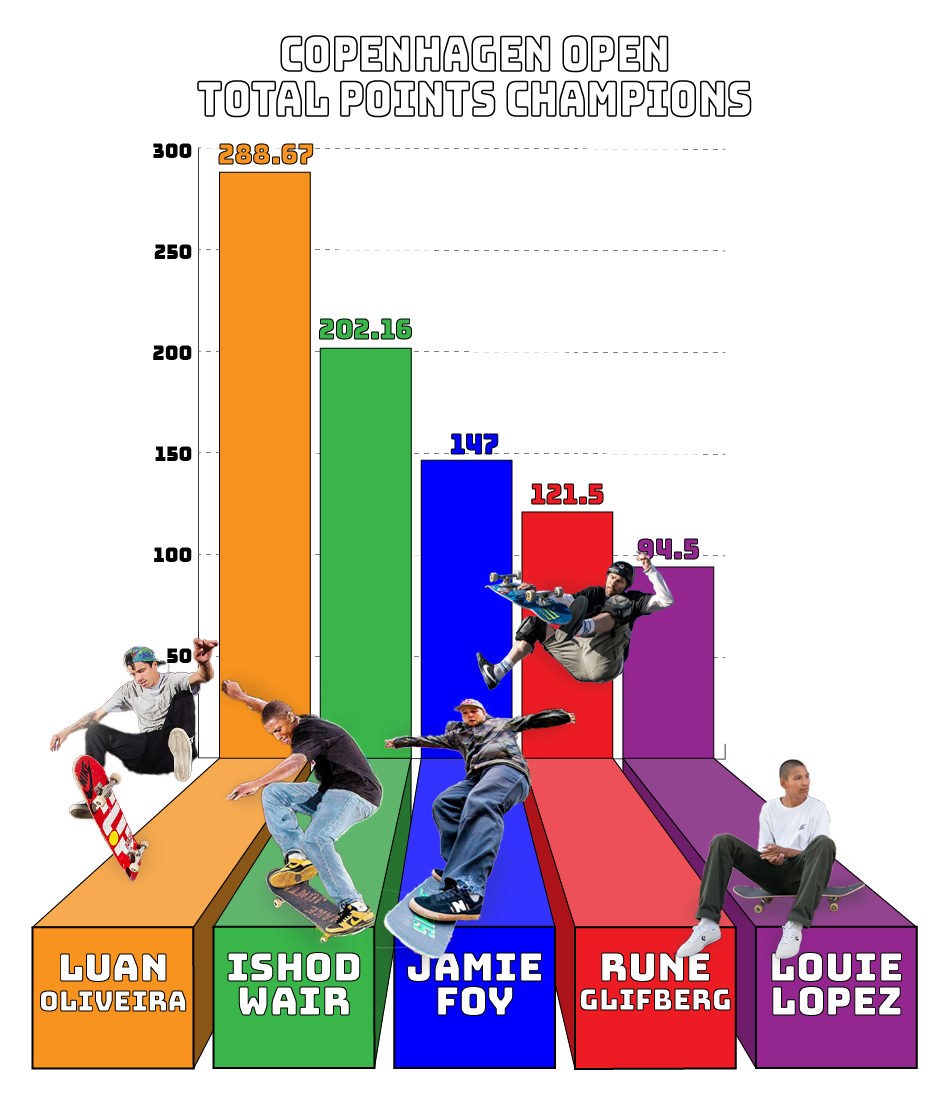
Congratulations, Luan!
And let's end this exploration with a nifty table that tracks the Top 25 CPH skaters all time. Consider this your official scorecard.*
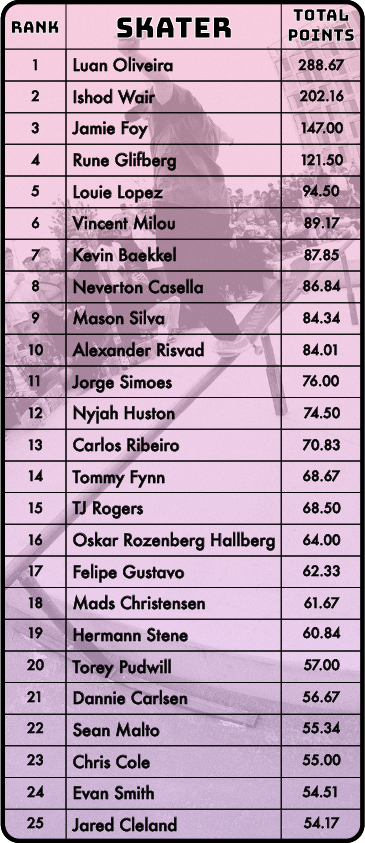
*None of this points-ranking stuff is official.
Head on over to the 4Ply Instagram account for more action packed content to keep you informed and titilated. Huge thanks to the entire city of Copenhagen, all our friends, the data-sharing dudes at the Boardr, and you. We’ll see you in Denmark next year.
